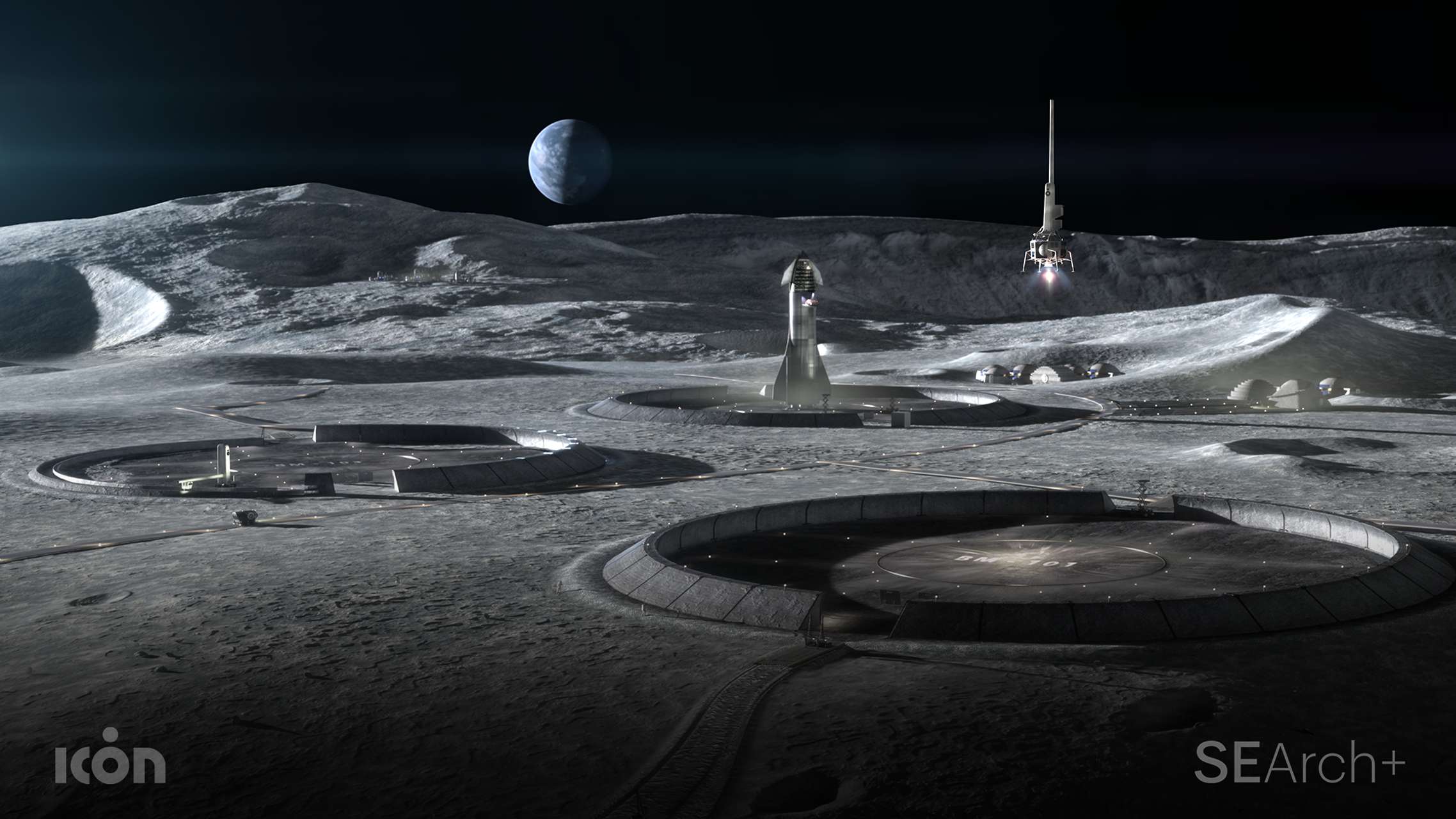Create a free profile to get unlimited access to exclusive videos, sweepstakes, and more!
NASA turns to 3D printing for space-based landing pads, roads, and habitats for Moon and Mars

Taking its name from the mythological home of the gods, an Austin, Texas startup firm is focusing its unique methods of housebuilding in a team-up with NASA for an expansive space-based construction system that will deliver a wide array of landing pads, storage facilities, fuel depots, access roads, laboratories, and living habitats for missions to the Moon and Mars.
ICON is mostly known for its proficiency at creating 3D-printed houses on Earth and will now extend their expertise in this arena with the launch of Project Olympus, an ambitious effort to develop needed infrastructure as humanity ventures forth from the planet and begins to establish permanent bases and sustained scientific programs off-world.
“Building humanity’s first home on another world will be the most ambitious construction project in human history and will push science, engineering, technology, and architecture to literal new heights,” said Jason Ballard, co-founder and CEO of ICON. “NASA’s investment in space-age technologies like this can not only help to advance humanity’s future in space, but also to solve very real, vexing problems we face on Earth. We are honored to begin our research and development on ICON’s “Project Olympus” and the “Olympus Construction System.”
Financing for Project Olympus will be fortified by a Small Business Innovation Research (SBIR) contract that ICON recently inked with the U.S. Air Force to advance the technology of its proprietary 3D-printing for use in manned outer space missions. According to the Austin Business Journal, this generous four-year deal is tagged at $14.55 million, according to the Austin Business Journal. NASA is also kicking in 15 percent of the SBIR total per ICON representatives.
"From the very founding of ICON, we've been thinking about off-world construction," Ballard added. "It's a surprisingly natural progression if you are asking about the ways additive construction and 3D printing can create a better future for humanity. I am confident that learning to build on other worlds will also provide the necessary breakthroughs to solve housing challenges we face on this world. These are mutually reinforcing endeavors."
NASA pairing with ICON and its solid reputation for fabricating 3D dwellings and infrastructure is a natural partnership, as the storied space agency ramps up its Moon-centric Artemis program of next-generation exploration and attempts to establish a long-lasting lunar presence by the end of the 2020s.
But these lofty goals will only come to fruition with the cooperation of several private corporations working together to harness Moon-based resources to mix into building substances. This goes for our ambitious leap over to the Red Planet as well.
ICON intends on partnering with NASA's Marshall Space Flight Center to test a number of optimum processing and printing methodologies using imitation lunar soil. Research will improve technology that ICON presented during NASA's 3D Printed Habitat Challenge in 2018.
"We want to increase the technology readiness level and test systems to prove it would be feasible to develop a large-scale 3D printer that could build infrastructure on the moon or Mars," Corky Clinton, associate director of Marshall's Science and Technology Office, said in a NASA statement. "The team will use what we learn from the tests with the lunar simulant to design, develop and demonstrate prototype elements for a full-scale additive construction system."
Project Olympus has also joined hands with a pair of award-winning architecture firms for this bold program: BIG-Bjarke Ingels Group and SEArch+ (Space Exploration Architecture), both internationally recognized for their "human-centered" architectural designs and stylish space-based concepts.
"To explain the power of architecture, 'formgiving' is the Danish word for design, which literally means to give form to that which has not yet been given form. This becomes fundamentally clear when we venture beyond Earth and begin to imagine how we are going to build and live on entirely new worlds," revealed BIG-Bjarke Ingels Group founder and creative director Bjarke Ingels.
“With ICON, we are pioneering new frontiers — both materially, technologically and environmentally. The answers to our challenges on Earth very well might be found on the moon."














